
Alphabet- A
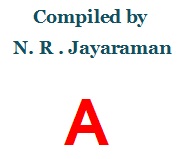
1. Artwork: The master copy containing illustrations etc either received from the customer or prepared in the press room for a print material. The art work –either in black and white or colored format- may include all graphics, text, illustrations & photos or will have only typographic matter. Only when the art work is finalized and approved by the customer, further processing of the same to bring it in print form will be carried out.
2. Acetate: A transparent plastic base material used in graphic arts designing and printing press for variety of reasons. The Acetate film, a specific type of plastic material called cellulose acetate comes in various thicknesses. The key templates / layouts are prepared (drawn) on the acetate base film, based on which the negatives, positives are assembled for processing plates for printing. Like assembling the negatives and positives, the final proofs of the composed matter is also taken out on a suitable paper and assembled based on the key layout to prepare process negatives. The designers place the acetate sheets over originals of artwork to write instructions and or indicate colors to be printed in that area. Besides the acetate film used for preparing Key Layouts, this film is also used in the preparation of the photographic/process films. Being transparent in nature, Acetate films are also used on photocopying machines to copy illustrations and other matter meant for projections in lectures. However since the dimensional stability of the acetate base is unstable, they are avoided in preparing the key layout for perfect registered jobs in process work.
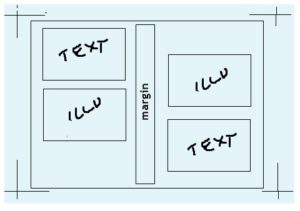
3. Acid-free Paper : Paper made from pulp containing little or no acid is called acid free paper whose pH value will be of 7 or little higher which is the standard requirement of the Printing industry. The prints taken on the non acetic paper may discolor or disintegrate more quickly than they would naturally remain in storage. In short the acid free paper resists the deterioration of the material from aging. The paper mill generally use acids to bleach the pulp, especially where wood pulp is used in order to remove the yellowish colour.
Where the acid content has been more than the desired level in the pulp, the paper turns out to be acetic in nature. Such acetic paper cause problems on the printing machines. The acetic paper interferes in drying of the ink. The higher percentage of acids during manufacturing react on the paper, and shorten the fibers, cause them to become brittle, discolor, and crumble into dust during long storage. Acidic papers deteriorate in a relatively short period of time, and should be avoided for use for printed items that are intended to last for many years. The non acid papers are called alkaline paper, archival paper, neutral pH paper, permanent paper and thesis paper.
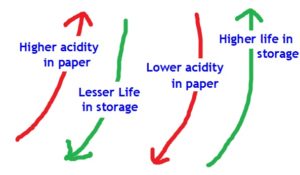
4. Acidity/Alkalinity : This factor covers many areas in printing – from paper to chemicals used in processing. The pH (potential for Hydrogen) measurement of paper determines the degree of acidity and alkalinity in the stock that influences drying of the ink on the paper surface. Readings below pH of 7.0 are acidic and above are alkaline. Most of the paper used for book publishing and other printed materials where permanence is of importance, has been alkaline paper, while the newspapers are generally acidic. Acid free, or pH neutral materials are always recommended for making paper. The alkaline paper making process has been increasingly adopted by paper manufacturers because it results in reduced water consumption in paper making, facilitates waste treatment and saves energy and materials costs. It is also cleaner and less corrosive to machinery than acid-based paper making.
5. Additives: Pigments, Varnishes, oils, solvents and wax apart from driers which are added during manufacturing of the ink are called additives. Each component has their own properties and are discussed under ink. (SEE TERM ‘INK’ FOR MORE DETAILS)
6. Additive Color : Color produced by light falling onto a surface, as compared to subtractive color. The additive primary colors are red, green and blue. Color reproduction is achieved by combining Red, Green, and Blue light (RGB) in varying levels to produce a full color image. Red, green, and blue are the primary colors of white light and they cannot be produced by the combination of any other colors. When they are combined they will produce white light. The combining of red, blue and green colors is known as the Additive Color Process.
If none of the additive primaries are present, the color is perceived as black. When two primary colors of light are combined, a secondary color is produced. The secondary colors of light are Cyan, Magenta, and Yellow (CMY). The secondary light colors are also the primary colors of used to reproduce color for printed media.
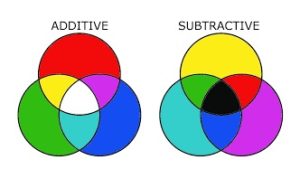
7. Alteration or AA and CA: Any change made by the customer after copy proof or artwork has been submitted for approval. AA stands for author’s alteration. The change could be in the copy, specifications or in both. In the similar manner CA meaning customer alteration is also used as a term for the same purpose.
8. Anodized Plate : An thin anodized (electroplating technique) aluminum offset printing plate used on small offset presses. The base plate which is generally of tin are deposited with tiny aluminum pixels by electroplating process. The anodized plates behave similar to aluminum plate used in the printing processes. The anodized plates are economical for small offset presses, easy to use and work well on the press. These plates could be viewed as improvised version over Paper based plates which has their backside laminated. Anodized plates are also reusable by recycling them by 2 to three times i.e by performing act of chemical graining (removing the old image) instead of mechanical graining. The process of repeated erasing and re imaging provides not only economic advantages but also environmental benefit as well. The plate making technique for the reusable anodized aluminum are same as for fresh plates.
9. Anti-offset Powder/ Anti set off sprays : Thin layer of fine powder sprayed over the printed image on the sheets to ensure that the ink does not stick to the back side of the sheet falling over it in the delivery end. The spraying is done with a spray unit fitted on the printing machine before delivery end. The anti spray powder is sprayed on the surface of printed sheets- especially coated papers like art papers- to prevent the transfer of wet ink from the printed sheet on to the back side of the sheet falling over it. The anti-set off sprays do not act as dryers, but the purpose is to provide a cushion of air gap which will help prevent set off. A powder, commonly used as anti set off power consists of fine starch particles that range in size from 10 micron to 15 micron. Anti-set off spray is mostly used on letterpress machines. The powder particles absorbed by the ink solidifies. Since the use of anti set off spray powder causes dirtiness to the machine parts, use of anti-set off spray has been discouraged as the present day inks are supplied with anti set off qualities. There are different grades of anti-set-off spray powders, to cater for different types of substrate with different absorption rates of the printing inks are being used. Printers with Rotary Presses including rotary letterpress, Web offset, Flexographic, Gravure, and Silk screen printing etc use UV cured inks instead of using anti set off spray system.
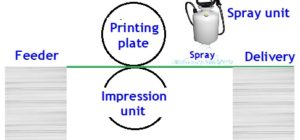
10. Antique Paper : Rough finish paper that gives the look of an age old paper with antique finish is the rough texture paper used as offset printing paper, and has a natural rough feel with a random texture. Little or no calendaring is done to the paper. The antique paper is used for printing vintage postcards, books of poems, advertisement material, wall posters, greeting cards etc.

11. Art paper : High-quality, relatively heavy printing paper, coated on both sides with material something similar to china clay or chalk powder to give a highly smooth finished surface. Such coating fills the minuscule pits between the fibers to give them a very smooth and glossy surface. Reproduction of finely registered multicolored images requires a paper that possess even surface to take on the printing inks uniformly. Its smooth printing surface and quick drying contributes to a true color reproduction. Different levels of coated paper like light coated, medium coated and heavy coated papers available in the market are put to different uses such as printing of Greeting cards, Advertisement material, Annual and other Reports of the companies, high quality Magazines to give gloss over their surface .
12. Anti static Rod : The attachment of anti static rods prior to deducting units at the end of the the feeder boards will help eliminate paper dust affecting the print quality. Such an attachment is usually in the form of a rod running across the feeder board or form part of the de dusting units. The function of these rods are to remove the static generated between few sheets traveling one below the other on the feeder board. When the static electricity on the paper surface is removed, the vacuum sucks away the loose floating dust and dirt from the surface of the paper and deposit them in a de dusting collection box. Usually the static affected papers refuse to release the dust and dirt particles from the surface thereby causing them to stick to the blanket surface which in turn cause voids in the printed areas of the sheets. Printers call them paper fluff which continues to print void image till the machine is stopped and blanket cleaned to remove the dirt.














Recent Comments